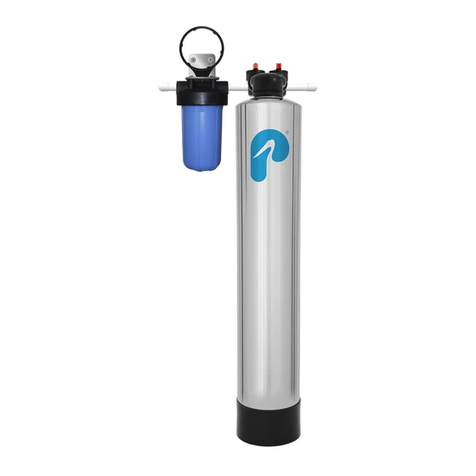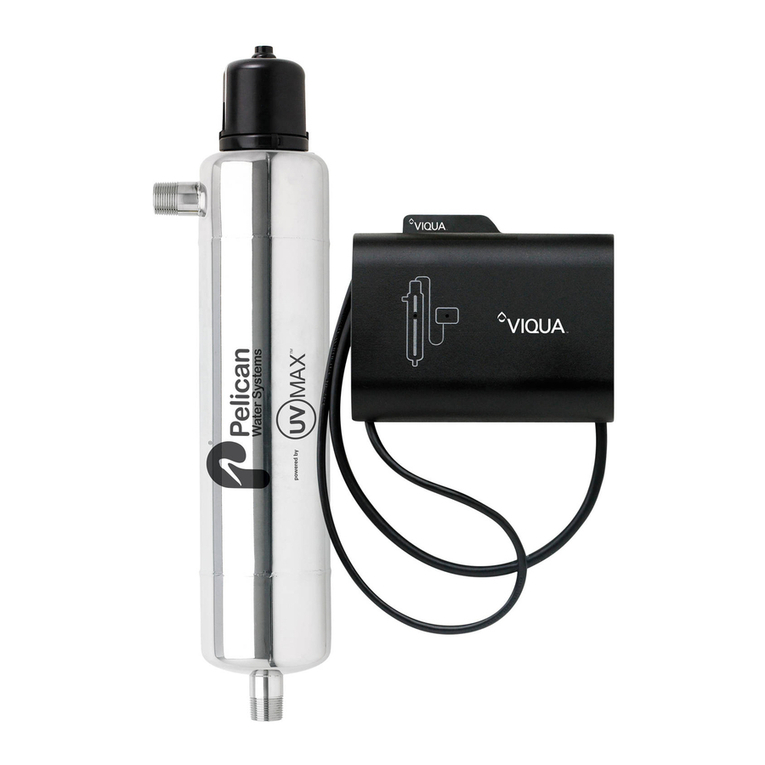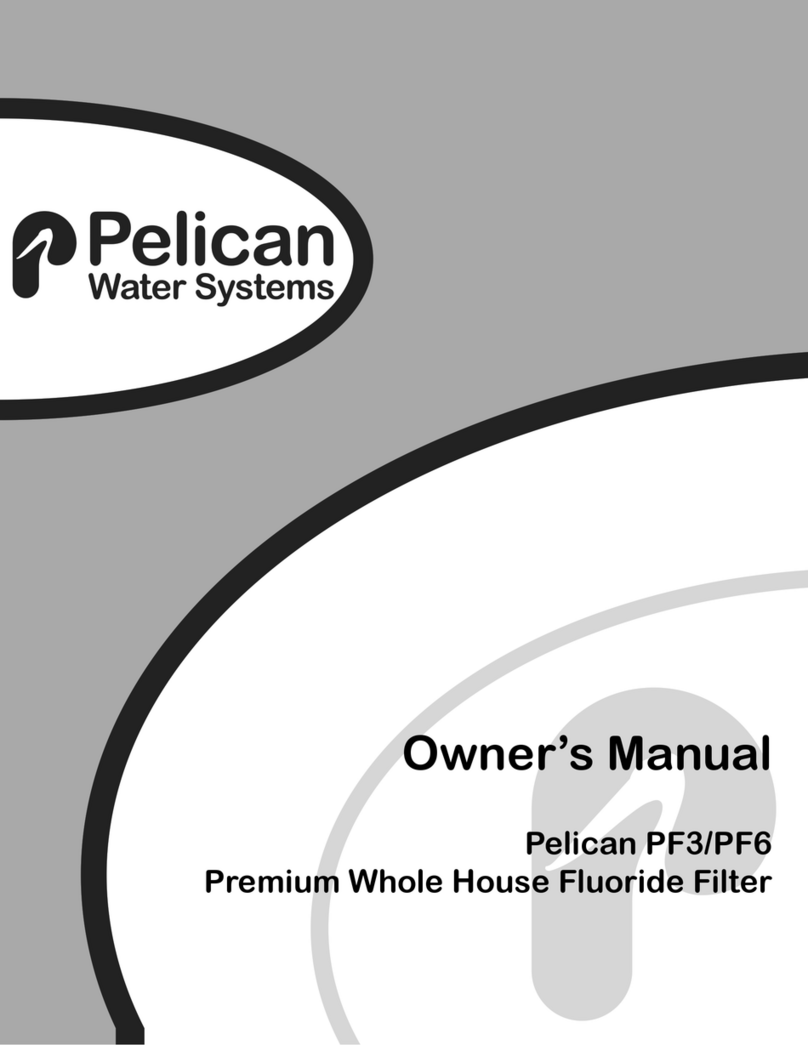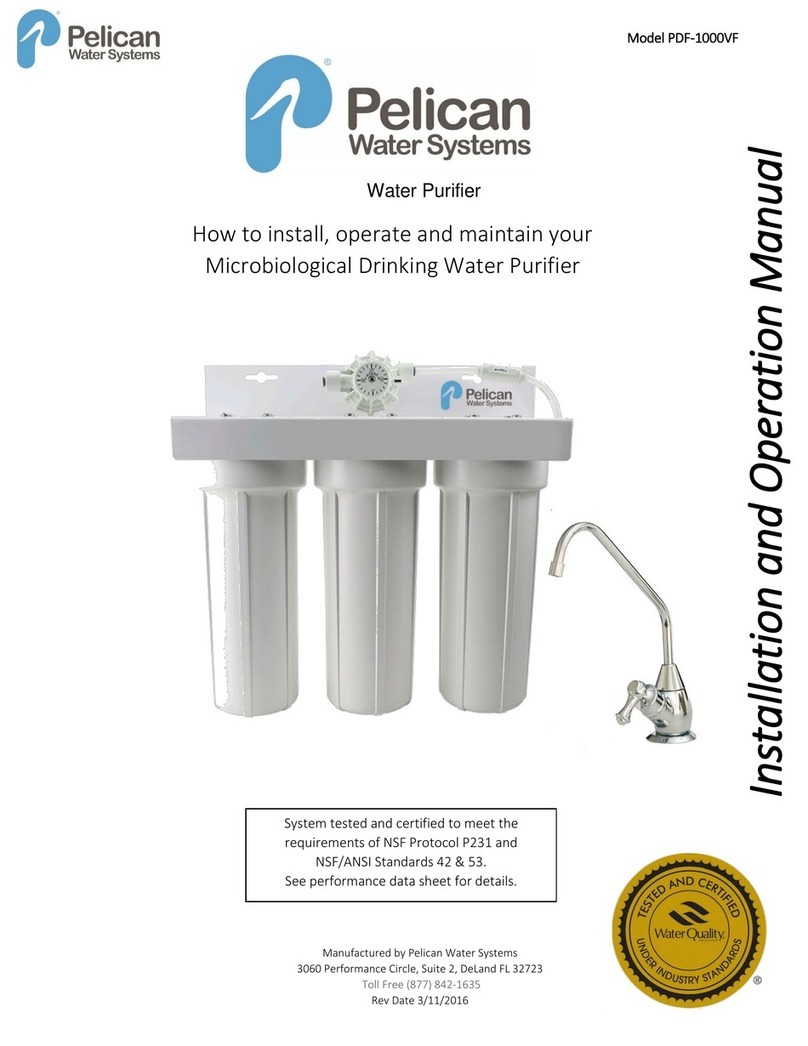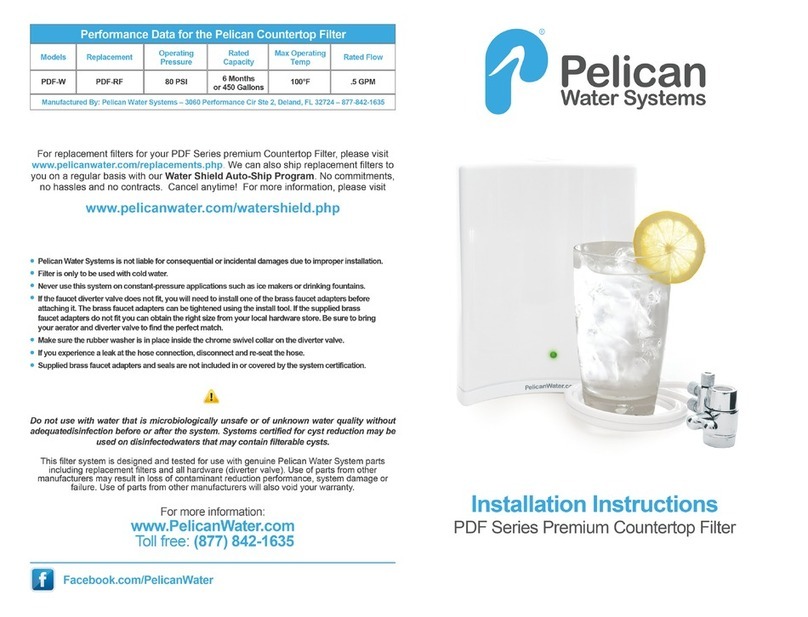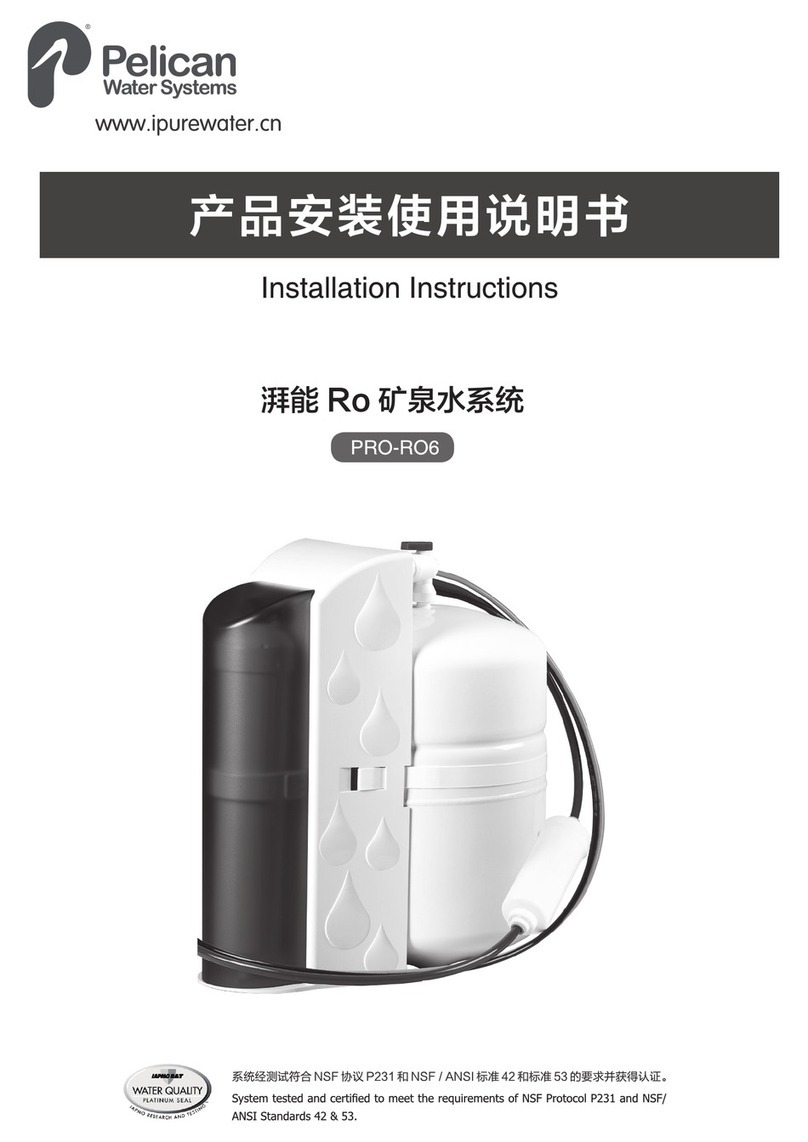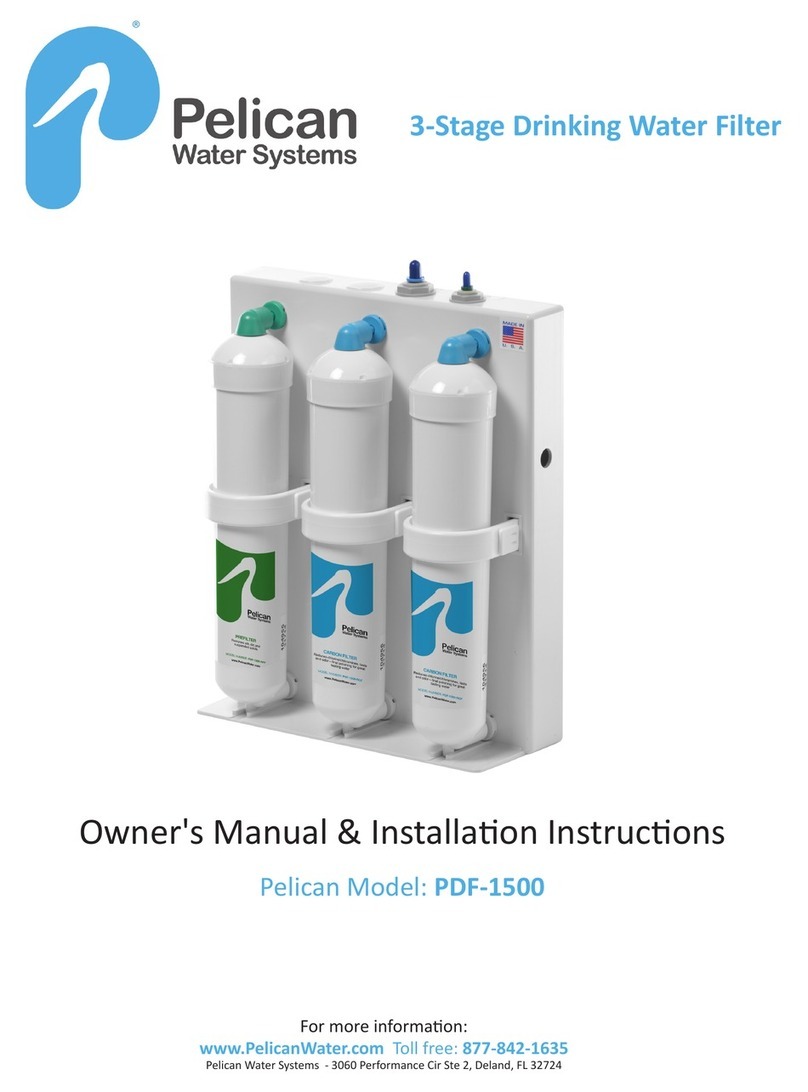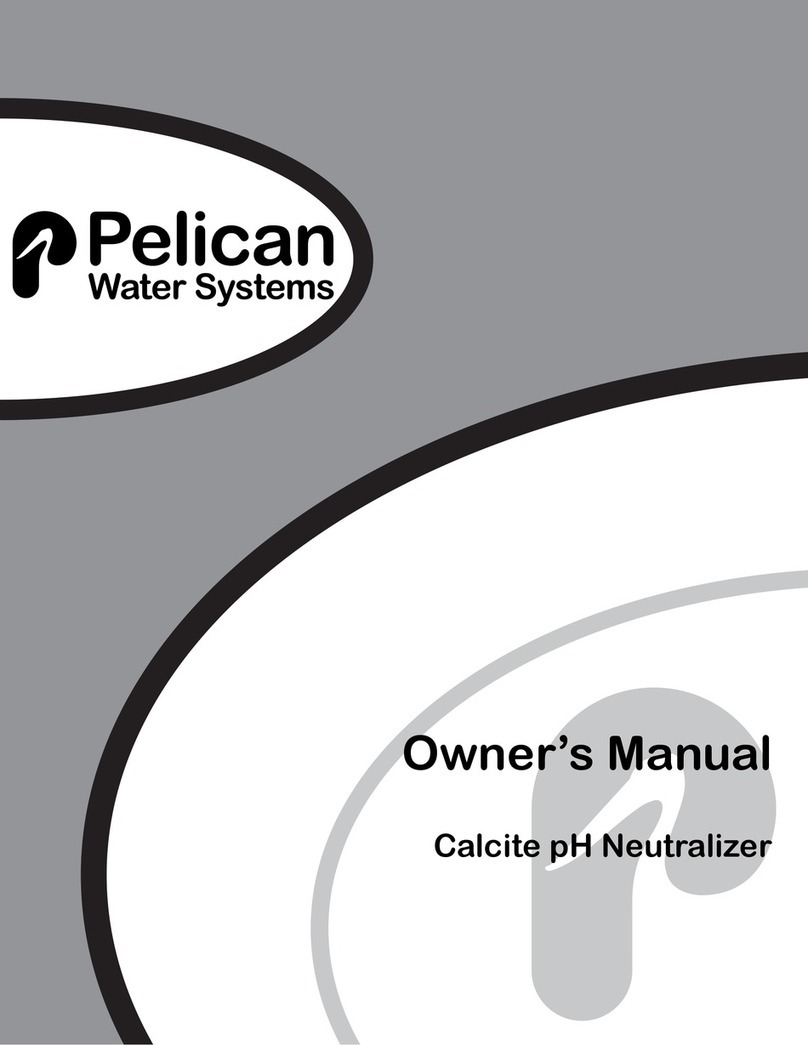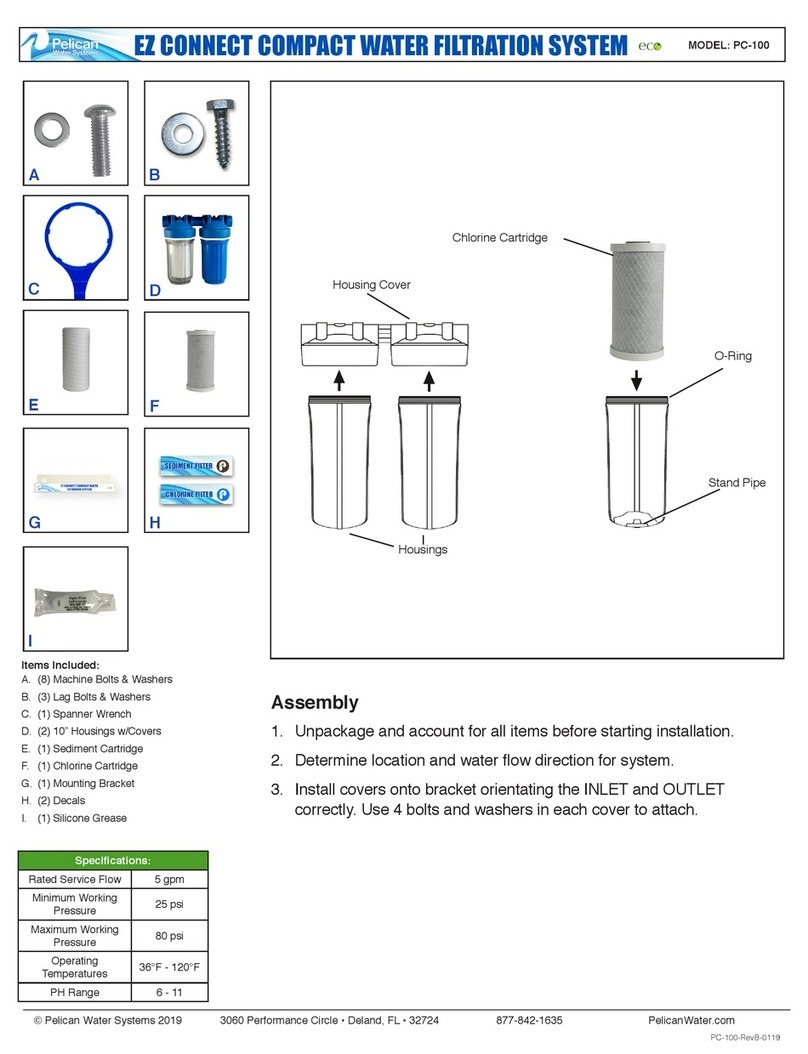B. Tools Recommended for Installation
The following tools will cover most of the installa-
tion sites encountered:
• 3/8" variable speed electric drill.
• Extension work light with outlet.
• Safety Glasses.
• 1-1/4" porcelain hole cutter kit.
• 1-1/4" Greenlee hole punch and 1/8" and 1/2"
metal drill bits for pilot hole.
• Center punch and hammer.
• 1-1/4" wood bit.
• Assorted wood and metal drill bits including
7/32" metal drill bit.
• Phillips head and flat blade screwdrivers.
• 1/2", 9/16" and 5/8" open end wrench.
• 10" Crescent wrench with jaws taped to hold
faucet.
• Teflon tape.
• Wide masking tape or duct tape.
• Plastic tubing cutter.
• Extra plastic tubing.
• Low range air pressure gauge.
• Bicycle hand air pump.
• Small bottle of liquid chlorine bleach.
C. Determine System Location
The R.O. system can be located under a sink or in a
basement depending on space availability and the
customer’s preference. If a basement installation is
selected, additional tubing, hardware and fittings
may be needed and a hole will have to be made from
inside the cabinet, through the floor, to the basement.
Never install in an area of the home where tempera-
ture is freezing as damage to the system will result.
Considerations for an ice maker or other remote
hookup should be determined, including routing and
any additional tools, fittings, and tubing that may
be required.
1. Faucet - The faucet should be placed near the
sink where drinking water is normally
obtained. Convenience of use (filling of water
pitchers and glasses), and an open area
beneath the faucet under the sink for attaching
product tubing are considerations.
A 2" diameter flat surface is required above
and below the mounting site. The thickness of
the mounting surface should not exceed 1-1/4".
Watch for strengthening webbing on the under-
side of cast iron sinks.
2. Drinking Water Holding Tank - The holding
tank may be placed where it is convenient
within 10 feet of the faucet, under the sink or
in an adjacent cabinet are best choices. If a
longer run of tubing is required, the tubing
should be the 1/2" diameter O.D. size to pre-
vent a high pressure drop. Remember, these
tanks can weigh up to 30 pounds when full of
water , a firm, level area is required.
3. R.O Assembly - The R.O. Assembly may be
mounted on either the right or left side of the
under-sink area or a cabinet. Mounting in the
basement is also an option, one possible loca-
tion is near the laundry /utility sink where cold
potable water and drain access is handy. The
mounting location should allow adequate clear-
ance and accessibility for cartridge changes.
4. Feed Water Connection - The self-piercing feed
water shut off valve should be located as close
to the R.O. assembly as possible. USE A
POTABLE COLD WATER SUPPLY ONLY.
Softened water is preferred as it will extend
the life of the R.O. Membrane.
5. Drain Connection - The drain saddle assembly
is designed to fit around a standard 1-1/2" OD
drain pipe. The drain saddle should always be
installed above (before) the trap and on the
vertical or horizontal tailpiece. Never install
the drain saddle close to the outlet of a garbage
disposal or plugging of the RO drain line may
occur. If discharging into an utility sink or
standpipe, an air gap of greater than 1" above
the flood rim must be provided. Do NOT con-
nect the system drain line to the dishwasher
drain or near the garbage disposal.
D. Prepare The Area For Installation
To save time it is often advised to call the customer
and request they clear under the sink prior to
arrival. Otherwise, remove supplies from under the
sink and stack them neatly away from the working
area. Arrange a light for the work area, if necessary.
If a basement installation is called for, determine
where components will be located and how they will
be mounted. Special mounting brackets and
hardware may be necessary to secure the system to
a wall or ceiling joists.
Inspect cold water supply line and drain to deter-
mine if any special fittings, in addition to what is
included in the kit, are required.
